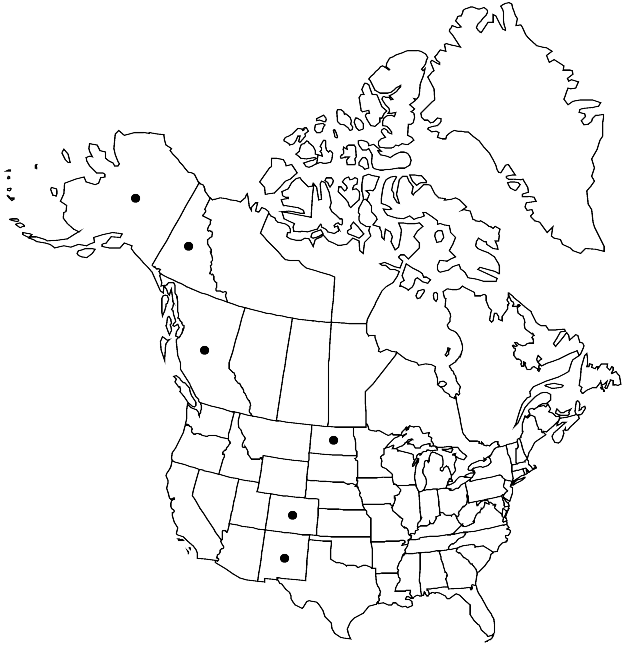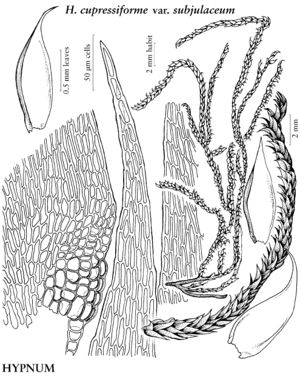Hypnum cupressiforme var. subjulaceum
Ber. Naturhist. Vereins Augsburg 18: 183. 1865.
Plants medium-sized, yellowish green to brown. Stems 5–8+ cm, creeping, subjulaceous to complanate-foliate, regularly to irregularly pinnate, to 2-pinnate. Leaves straight to weakly falcate, sometimes homomallous, oblong-lanceolate, gradually narrowed to apex; margins subentire to weakly toothed; alar cells many, subquadrate, pigmented, region excavate. Branch leaves 1.5–2 × 0.4–0.6 mm or slightly larger.
Phenology: Capsule maturity unknown.
Habitat: Terrestrial, cliff shelves, horizontal rock surfaces, exposed and sheltered sites, usually calcareous substrates
Elevation: low to high elevations (0-4000 m)
Distribution

B.C., Yukon, Alaska, Colo., N.Mex., N.Dak., Europe, Asia, Pacific Islands (New Zealand).
Discussion
Variety subjulaceum is frequent in the Alaskan Peninsula but uncommon (or unrecorded) elsewhere in North America; it is found mainly at high elevations in Europe. The variety has somewhat concave leaves. No sporophytes were found in North American material. The acutely attached branches, closely imbricate, straight leaves with sharp apices, and frequently excavate pigmented alar cells make this a distinctive variety.
Selected References
None.
